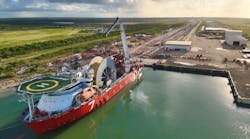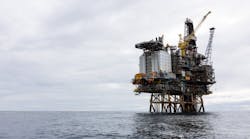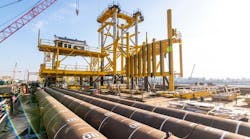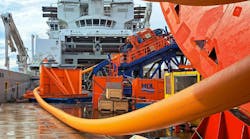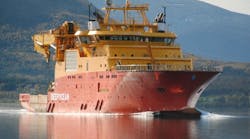Offshore staff
HØVIK, Norway–A two-year, joint industry project led by DNV GL has concluded in a recommended practice that aims to reduce the amount of subsea documentation and enable documentation reuse in a typical subsea field development project.
DNVGL-RP-O101 “Technical documentation for subsea projects” details a required minimum set of documentation transferred between E&P companies, operators, and contractors for the construction, procurement, and operation of a field. The outcome will reduce the volume and variety of documentation exchanged between the parties in a project, thereby making project execution more cost effective.
Bente Helén Leinum, project manager, DNV GL – Oil & Gas, said: “We like solid documentation in DNV GL, but this massive explosion in paper hasn’t tangibly improved performance, safety or environmental impact – it’s just escalated costs without adding value.
“A benchmarking exercise by one JIP participant showed that adoption of the RP could deliver a 42% potential reduction in engineering hours. The savings come from reduced reviews by reusing documents, having more standardized documents, and avoiding unnecessary reviews of non-critical documents. Another supplier estimates that the potential cut in documentation can be as high as 75-80% through increased use of standardized documents.”
According to a contractor in the JIP, subsea documentation increased by a factor of four between 2012 and 2015. Previously, a contractor in a typical subsea project would deliver around 10,000 documents, with each one averaging three revisions, resulting in up to 30,000 transactions between two actors. Today, projects can deliver 40,000 documents, with three revisions resulting in 120,000 transactions. Handling time has also doubled per revision. A big project may require a contractor to have 25 people just on document control.
Jan Ragnvald Torsvik, lead engineer of Life Cycle Information at Statoil and co-chairman of the project, comments: “All JIP partners have invested considerable time and the outcome is a fantastic achievement that will dramatically cut waste in the handling of technical information in projects. We have already learned that this standard’s approach in utilizing package-specific requirements has a positive impact on standardization and efficiency. We are already seeing the benefits of implementing a draft version of the RP inStatoil’s Johan Sverdrup project last year.”
Tommy Lien, Senior LCI Process Coordinator, Aker Solutions, said: “The RP encourages more reuse of subsea documentation and will deliver more predictability throughout the value chain. It provides clear expectations for all parties involved, and duplications, misunderstandings, and unnecessary work can be avoided.”
JIP participants were Aker Solutions, Brightport, Centrica Energi, DEA Norge, Det norske oljeselskap, DNV GL, ENI Norge, GCE Subsea, FMC Technologies, GDF SUEZ E&P Norge, Kongsberg Oil & Gas Technologies, Lundin Norway, Oceaneering, OneSubsea, Statoil, Subsea 7, Subsea Valley, and SUNCOR Energy Norge.
Observers were the Norwegian Oil and Gas Association and Petroleum Safety Authority Norway.
06/13/2016
Share your news withOffshoreat [email protected]
